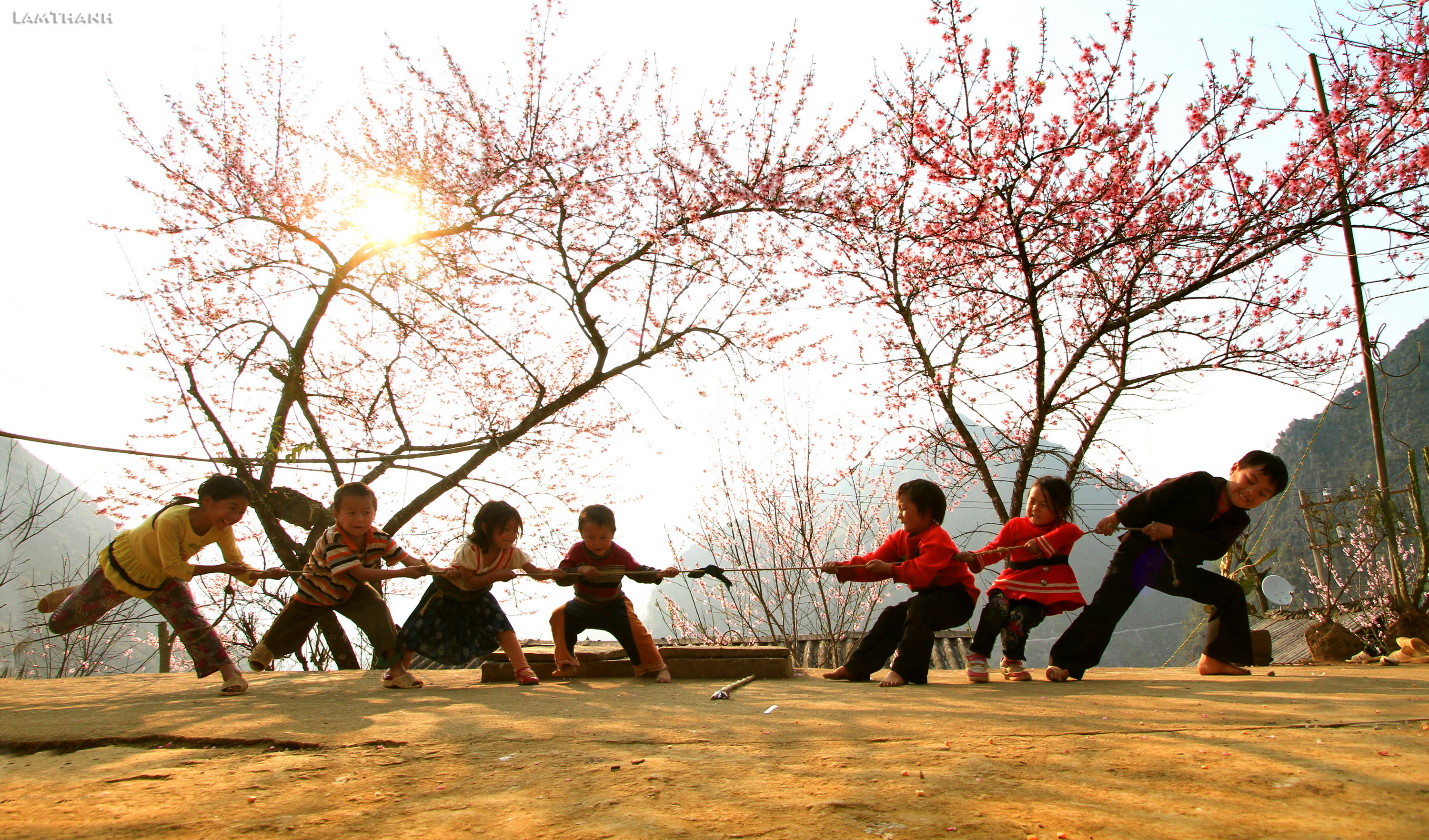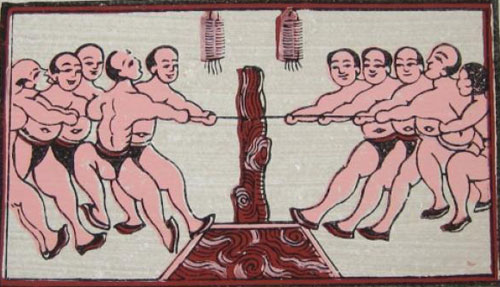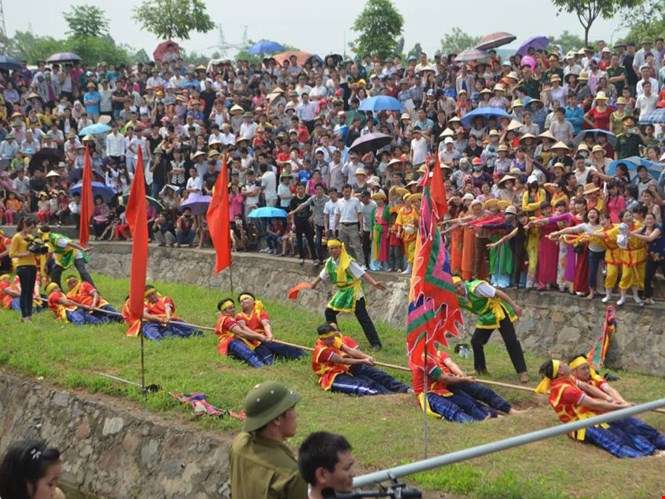 |
| Photo:internet |
The traditional tugging rituals and games in Vietnam, along with in Cambodia, the Philippines and the Republic of Korea (RoK), have been officially listed in the Representative List of the Intangible Cultural Heritage of Humanity.
In Vietnam, tug-of-war is played by during festive events across the country and it is also a popular game for several ethnic groups. It is a cultural tradition of Vietnamese agricultural, expressing hope for favourable weather and bountiful crops. During the festivals, tug-of-war showcases the teamwork, discipline and spirit of the players. Ropes made of different materials, wooden sticks and even hands are used in the game. The rules of the game may also vary in different regions, but above all, the game represents strength and unity. In modern society, tug-of-war remains a popular game, especially among students and workers.
Tug of war has become a favorite folk game of many people. Children and adults love to play tug of war because it requires no particular skill or training. There is no limit as to how many people take part so it is always a favorite for festival and special occasions like Tet.
 |
In many regions it still reflects traditional Vietnamese beliefs. For example, in Tich Son Village, Vinh Phuc Province, tug of war fur men only is held on the third day of the first lunar month afterTet. Organizers arrange the cord in an east-west direction, evoking the trajectory of the sun. Older men stand to the east, younger men to the west. After three matches, the team that compels the other group to take three steps forward is the winner. According to traditional belief, if the eastern (older) team wins, the villagers will have bumper crops throughout the year. Therefore, the western team often "volunteers" to lose.
Players are divided into two groups and stand face to face along a bamboo cord. Each group takes one end of the rope. A red piece of cloth marks the middle of the cord, which is above a line drawn with lime in the dirt. After a signal from the referee, game starts, both teams pull on the rope as hard as they can.
 |
| Photo:Internet |
Spectators cheer their favorite team from outside a circle drawn with lime. The moment a competition begins, the viewers' noisy acclaim inspires the participants, increasing their zest to win.
A traditional Korean folk game of tug-of-war added its name on UNESCO's intangible heritage list on December 02, jointly with three other Asian countries with a similar tradition.
The Korean version of the tradition, called juldarigi, originated in "gijisi," a small rural village in the western port city of Dangjin, south of Seoul. The agricultural ritual is often performed on the first full moon of the year in hopes of rain and abundant harvests. Other rice-growing countries in Asia hold similar rituals, which are sometimes used to predict the success of the year's farming.
In South Korea, many regional-based variations of the sport are registered as the nation's cultural assets.
With the newest addition, Viet Nam now has a total of 10 folk traditions on the UNESCO heritage list: the vi giam folk songs of central province of Nghe Tinh; the art of don ca tai tu music and songs in southern Viet Nam; the worship of the Hung Kings and xoan singing (a kind of folk singing with rituals) in northern Phu Tho Province; the Giong festival of the Phu Dong and Soc Temples, as well as ca tru (ceremonial singing); quan ho Bac Ninh (love duets) folk songs; nha nhac (Vietnamese court music) and the gong culture in the Central Highlands.

















COMMENTS